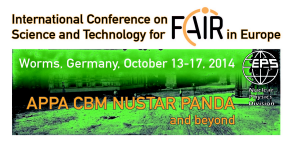Speaker
Anna Constantinescu
(GSI)
Description
Cardiac arrhythmias, like atrial fibrillation, are often treated by radiofrequency catheter ablation. Thereby scar tissue is created to isolate the heart’s conduction system from anatomical areas containing misled electrical signals, which generate and sustain the irregular heartbeat. Catheter ablation procedures have a varying success rate and can lead to severe side effects or even death [1]. Recently, animal studies showed that a non-invasive ablation with photons is feasible [2, 3]. Based on the experiences gained in cancer treatment, even more promising results are expected for the creation of cardiac lesions with ions [4]. In order to investigate the feasibility of carbon ion radio-surgery on cardiac target volumes an animal study was conducted at GSI. Heartbeat gated computed tomography (CT) scans of eighteen pigs were acquired. Three different cardiac volumes were investigated: the atrioventricular node (AVN), the pulmonary vein (PV) and a region in the left ventricles (LV). The PV and LV were targeted with 40 Gy single fraction doses in three and four pigs, respectively. The AVN irradiation was designed as a dose-escalation study including dose groups of 0, 25, 40 and 55 Gy. The influence of the respiratory motion was compensated by ventilating the animals, while the heartbeat influence was mitigated by the use of multiple irradiations with a reduced dose deposition (rescanning). The dose depositions in the organs at risk (OAR) were examined. The heartbeat motion influence on the target volumes was small (< 5 mm) but required compensation. Safety margins were used for the irradiation (ITV + isotropic 5 mm for AVN and PV and range margins of (2 mm ± 2%) for the LV). Good dose homogeneity in the target area was achieved, while the dose deposited in critical volumes (e.g. aorta, esophagus, trachea, skin) were negligible. The results, both satisfying in target coverage as well as OAR sparing, led to the application of the generated treatment plans. Final results on the formation of scar tissue are expected in the end of October. Scanned carbon ion beams have the potential to become an accurate, fast, and non-invasive treatment approach for arrhythmias.
[1] Cappato et al., Worldwide survey on the methods, efficacy and safety of catheter ablation for human atrial fibrillation, Circulation 111(9), 2005
[2] Sharma et al., Noninvasive stereotactic radiosurgery (CyberHeart) for creation of ablation lesions in the atrium, HeartRhythm 7(6), 2010
[3] Blanck et al., Dose-escalation study for cardiac radiosurgery in a porcine model, Int. J. Radiat. Oncol. Biol. Phys. 89(3), 2014
[4] Bert and Durante, Motion in radiotherapy: particle therapy, Phys. Med. Biol. 56(16), 2011
Primary author
Anna Constantinescu
(GSI)

